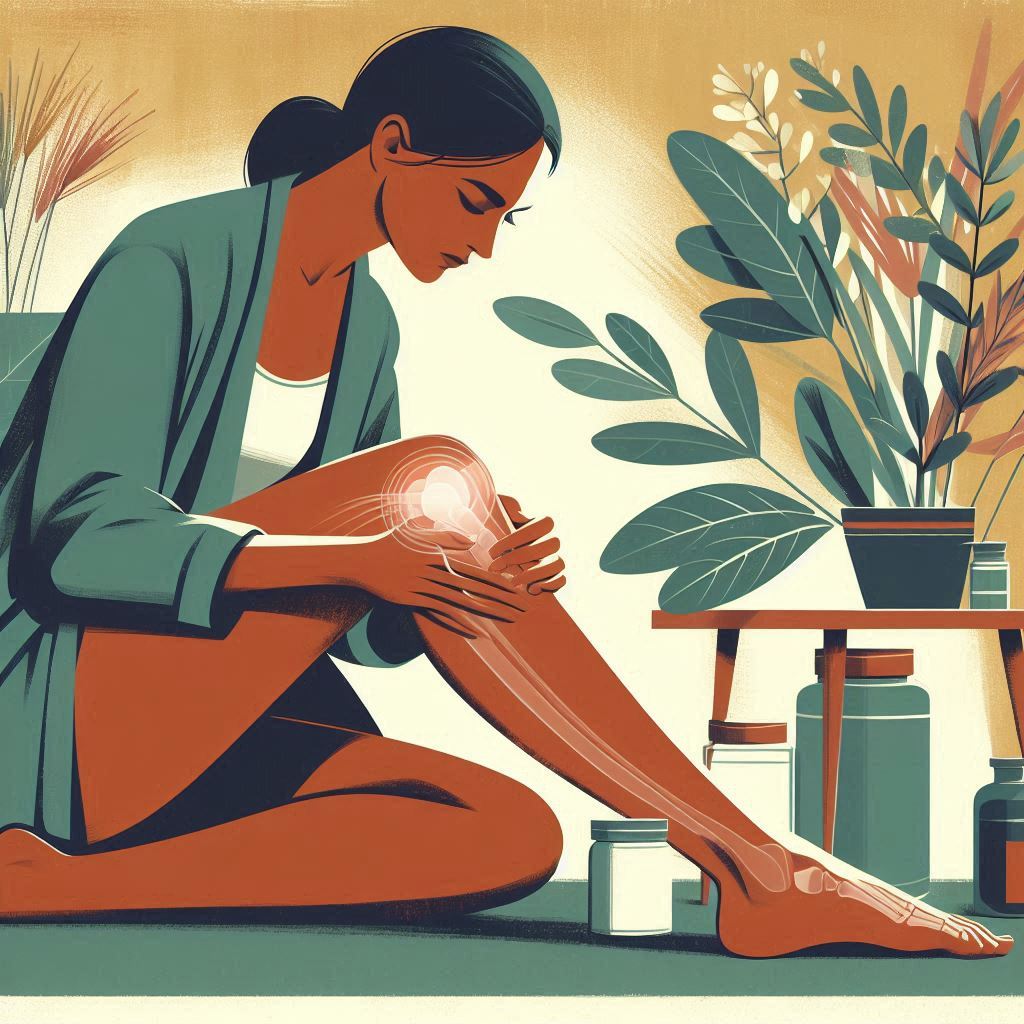Your cart is currently empty!

Joint Pain During Perimenopause
•
I was at a pool party a few weeks ago when a friend mentioned she had knee pain from her fluctuating estrogen levels in perimenopause. I literally gasped. I didn’t know this was a thing! It blew my mind because I’d been dealing with knee pain for months, thinking I was getting arthritis. The perimenopause phase of life brings out the most unexpected symptoms, and sometimes no doctor or book can fully prepare you.
Perimenopause hits every woman differently. While hot flashes and mood swings are the well-known culprits, joint pain sneaks up on many unexpectedly. Why does it happen? The drop in estrogen levels can affect the lubrication in joints, leading to stiffness and pain. Estrogen isn’t just about reproduction; it plays a role in keeping our joints flexible and smooth. So when it dips, our joints suffer the consequences.
It’s wild, isn’t it? Realizing that joint pain can be linked to something like hormonal changes. There are testimonies from women all over who’ve experienced similar issues. Experts confirm that these hormonal ups and downs during perimenopause can indeed trigger joint pain. Understanding this connection can be a game-changer in managing symptoms and finding relief.
Causes and Diagnosis: Perimenopausal Joint Pain vs. Arthritis
Wondering if the joint pain you’re experiencing will ever go away is totally valid. The truth is, for many women, perimenopausal joint pain can improve once hormone levels stabilize after menopause. However, the journey from perimenopause to menopause isn’t a smooth ride for everyone. During this phase, managing symptoms is crucial.
Low estrogen levels have a big impact. Estrogen acts as a natural anti-inflammatory in the body. When these levels drop, inflammation can increase, leading to joint pain. This often makes it feel like arthritis, which can be quite alarming.
Telling apart perimenopausal joint pain from arthritis involves looking at the bigger picture. Arthritis often involves joint damage, while perimenopausal pain usually results from temporary inflammation due to hormonal changes. Consult a healthcare provider for accurate diagnosis and to rule out other conditions.
Expert opinions and recent studies emphasize the hormonal link. The drop in estrogen isn’t just annoying — it’s directly tied to why your knees ache or why your back feels stiff. Understanding this helps in seeking the right treatment.
So, if you’re experiencing joint pain and suspect it might be perimenopausal, don’t hesitate to get medical advice. Exploring this with your doctor might lead to an eye-opening understanding and better symptom management.
Relief and Treatment: Managing Joint Pain During Perimenopause
Finding relief from perimenopausal joint pain can feel like a victory. One thing that helped me a lot was using wild yam cream twice a day. It’s packed with natural progesterone, which can help balance those fluctuating hormones. Another helpful supplement is Glucosamine Chondroitin, known for its joint-health benefits. I use one that also has turmeric added and take it with my other daily supplements. These might just be your new best friends in this phase.
Lifestyle changes also play a significant role. Regular exercise can keep joints flexible and reduce pain. Low-impact activities like swimming or yoga can make a big difference. Plus, a healthy diet rich in anti-inflammatory foods—think leafy greens, nuts, and fatty fish—can soothe your aching joints.
Getting proper medical advice ensures you’re on the right track. Different treatments work for different people, and a healthcare provider can tailor advice to your specific needs.
Success stories from women who’ve navigated these waters are inspiring. Many found relief through a combination of treatments. For instance, someone might pair hormone therapy with physical therapy or take supplements along with making dietary changes. Hearing what worked for others can provide new strategies to explore.
Lastly, long-term management is key. Regular check-ups, staying active, and maintaining a balanced diet helps keep symptoms in check. Self-care isn’t a luxury; it’s a necessity. Make time for activities that make you happy and reduce stress. Each small step contributes to a more comfortable experience during perimenopause.
This post contains affiliate links. I may receive a small commission if you click on the links of the products if you make a purchase. That said, I only write about products I really like and use. I choose what to talk about based on what I have truly found works for myself. Hope this post is helpful. xo
2 responses to “Joint Pain During Perimenopause”
It’s so crazy all of the things that happen during perimenopause that you don’t expect. Thanks so much for this information!
I know, Amelia. I’m trying to collect a lot of this information for my younger sisters so they won’t be as surprised by it all as I was.

Leave a Reply